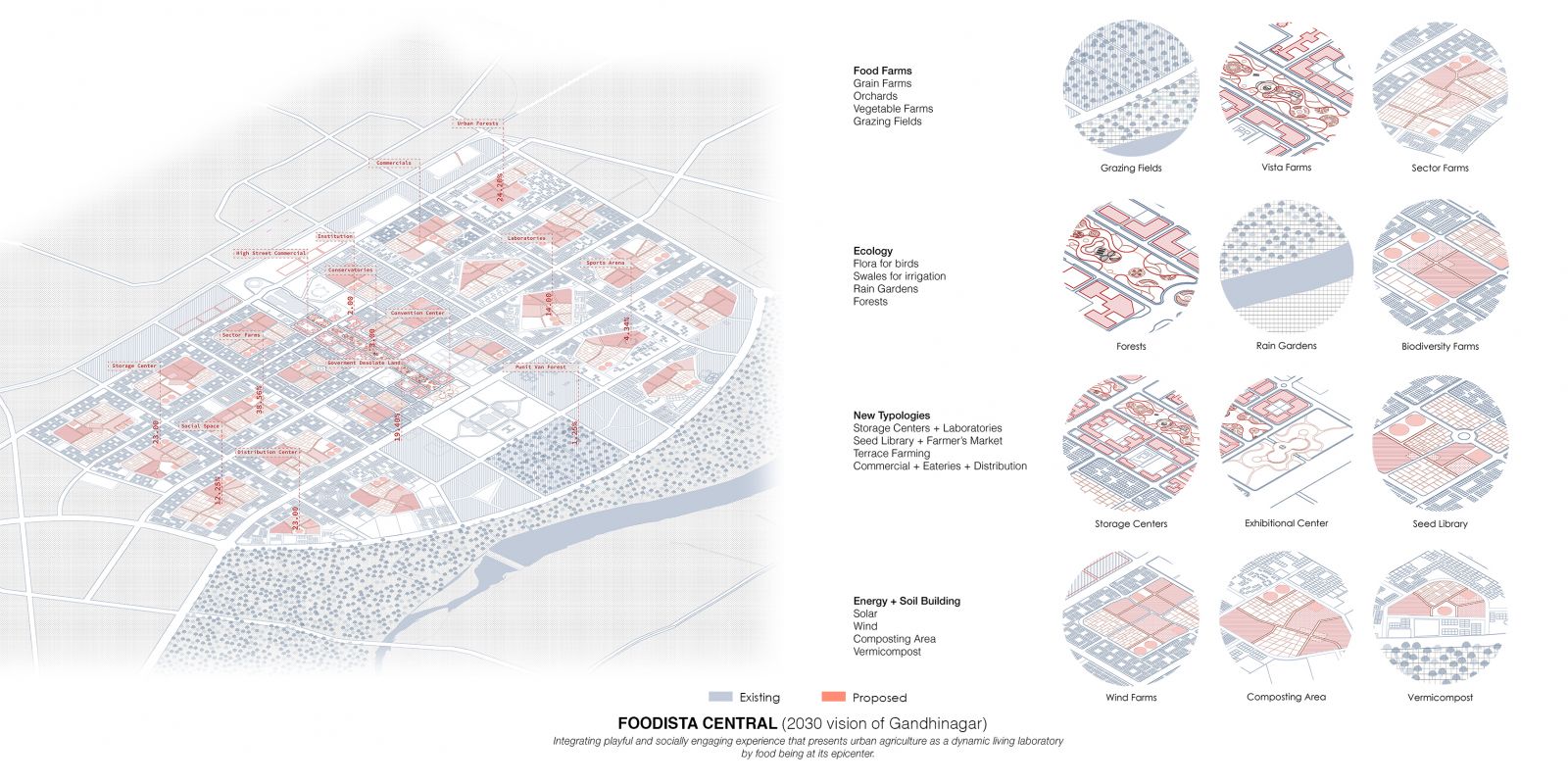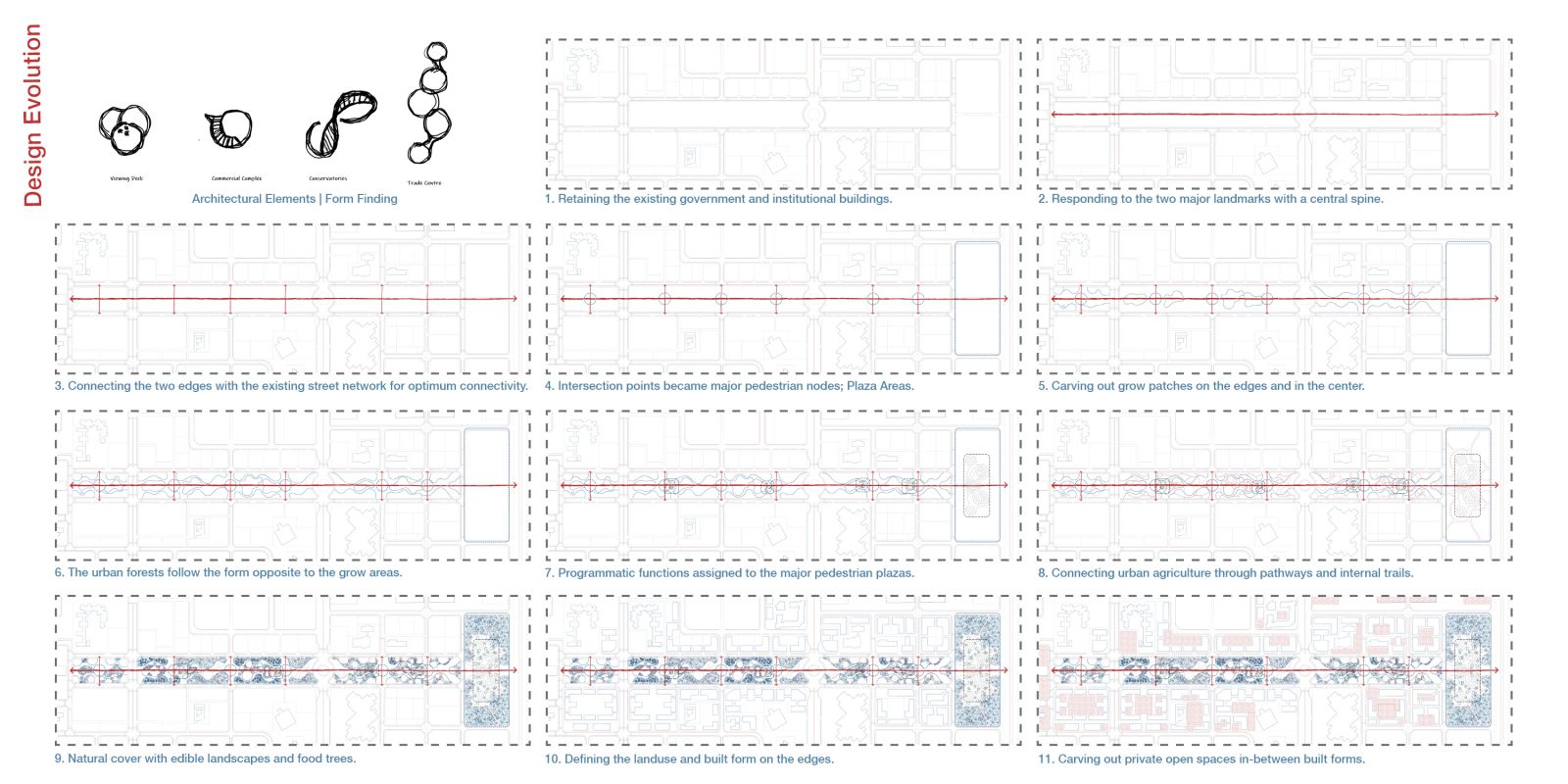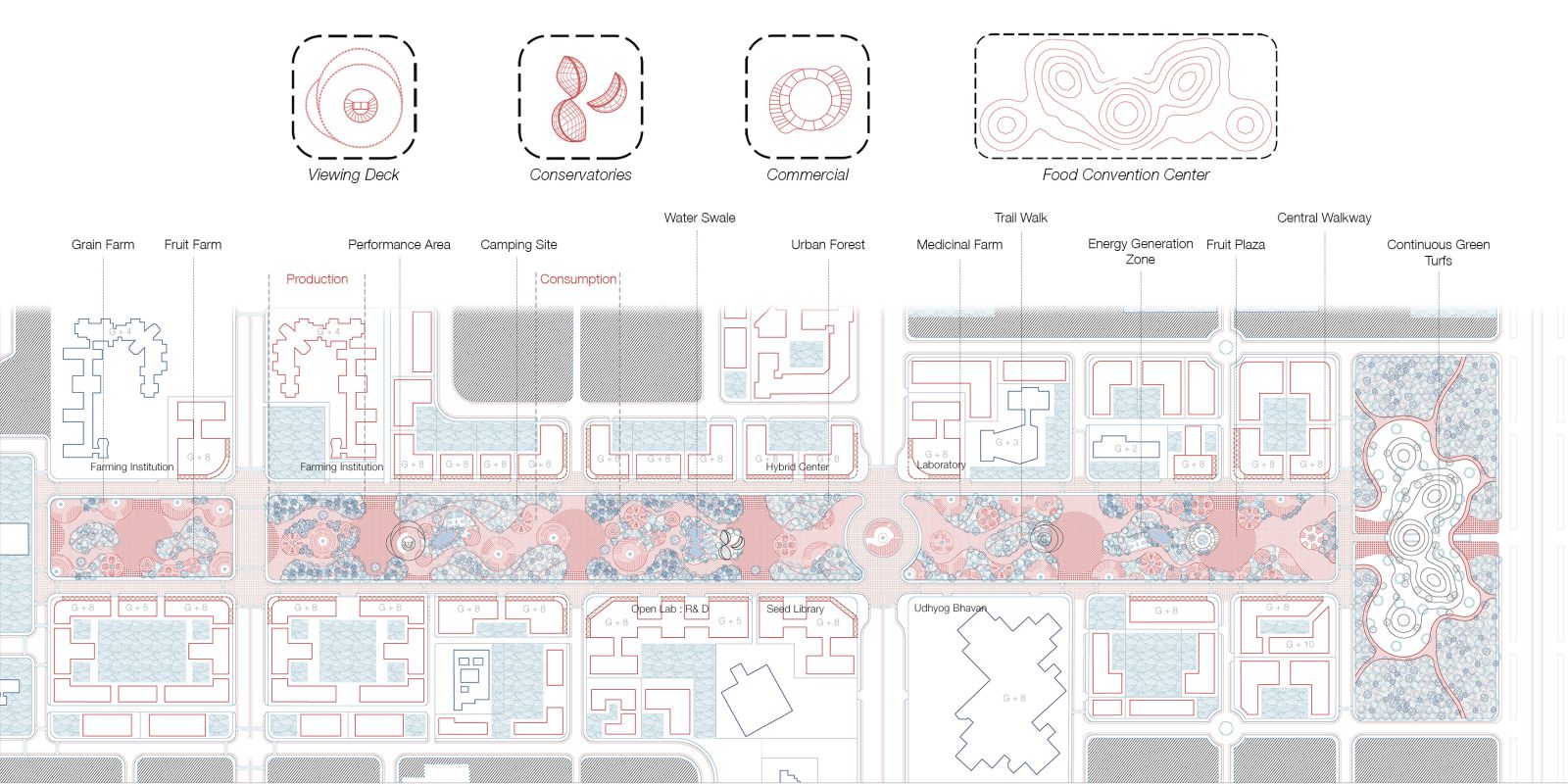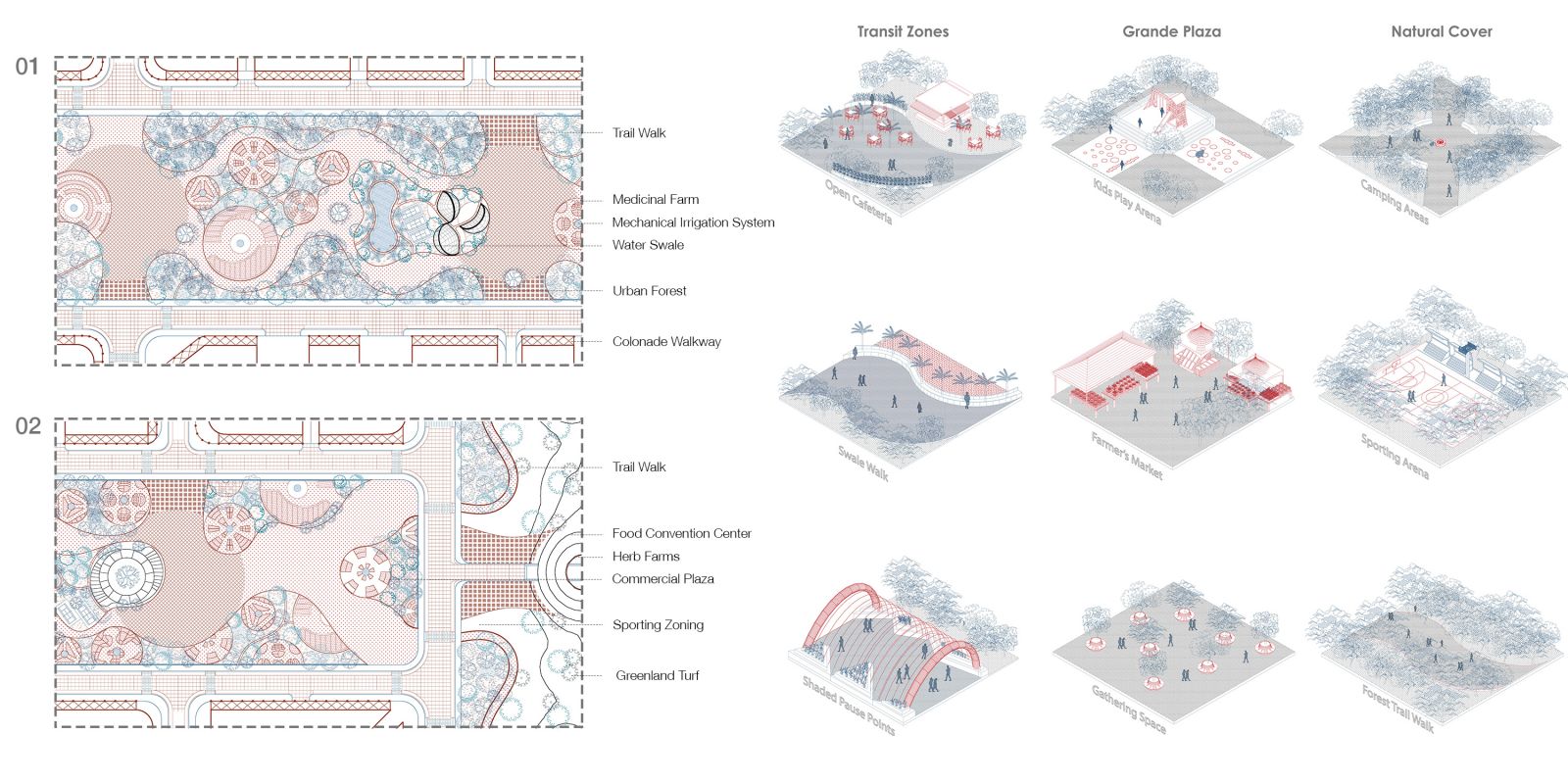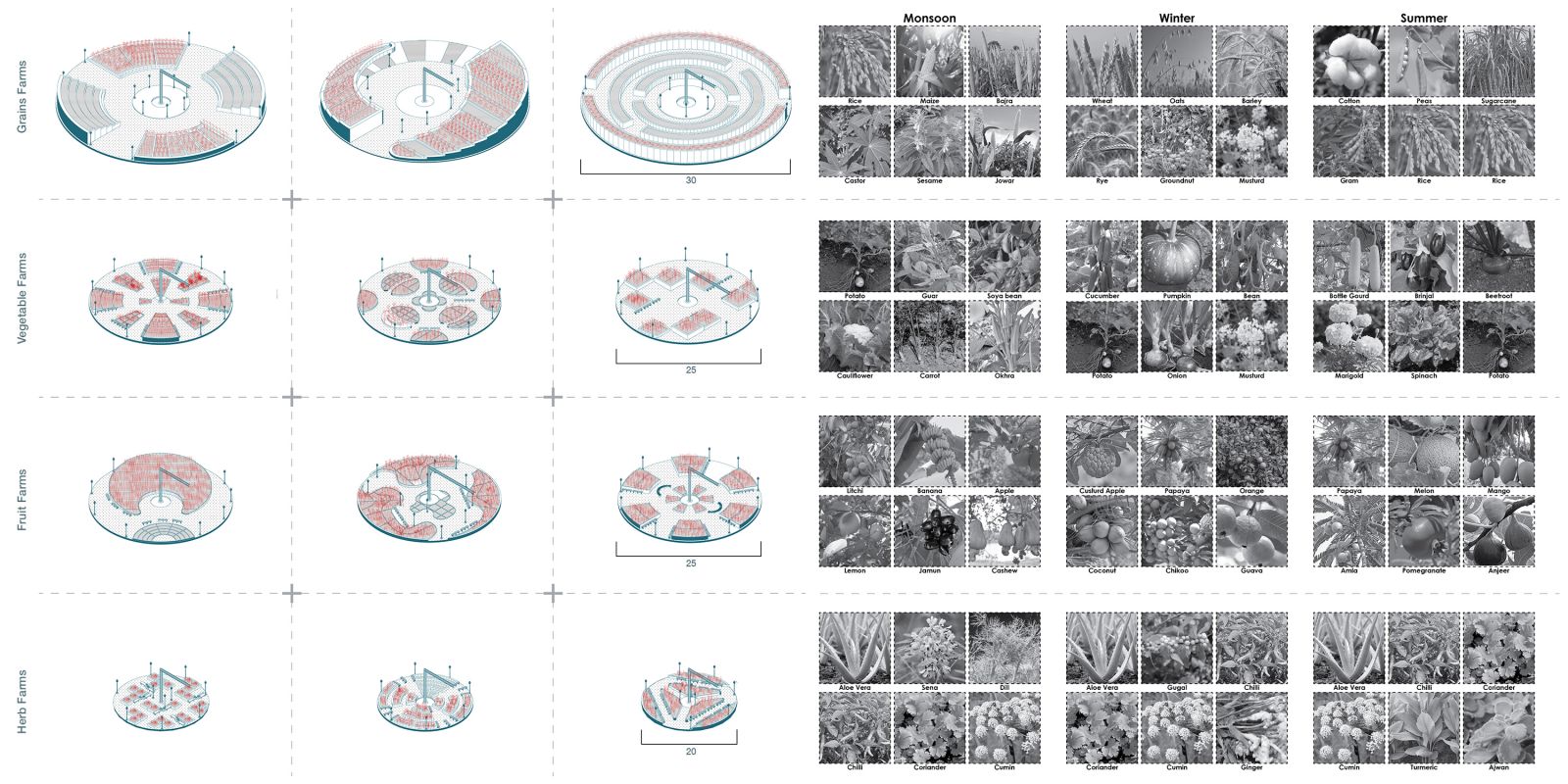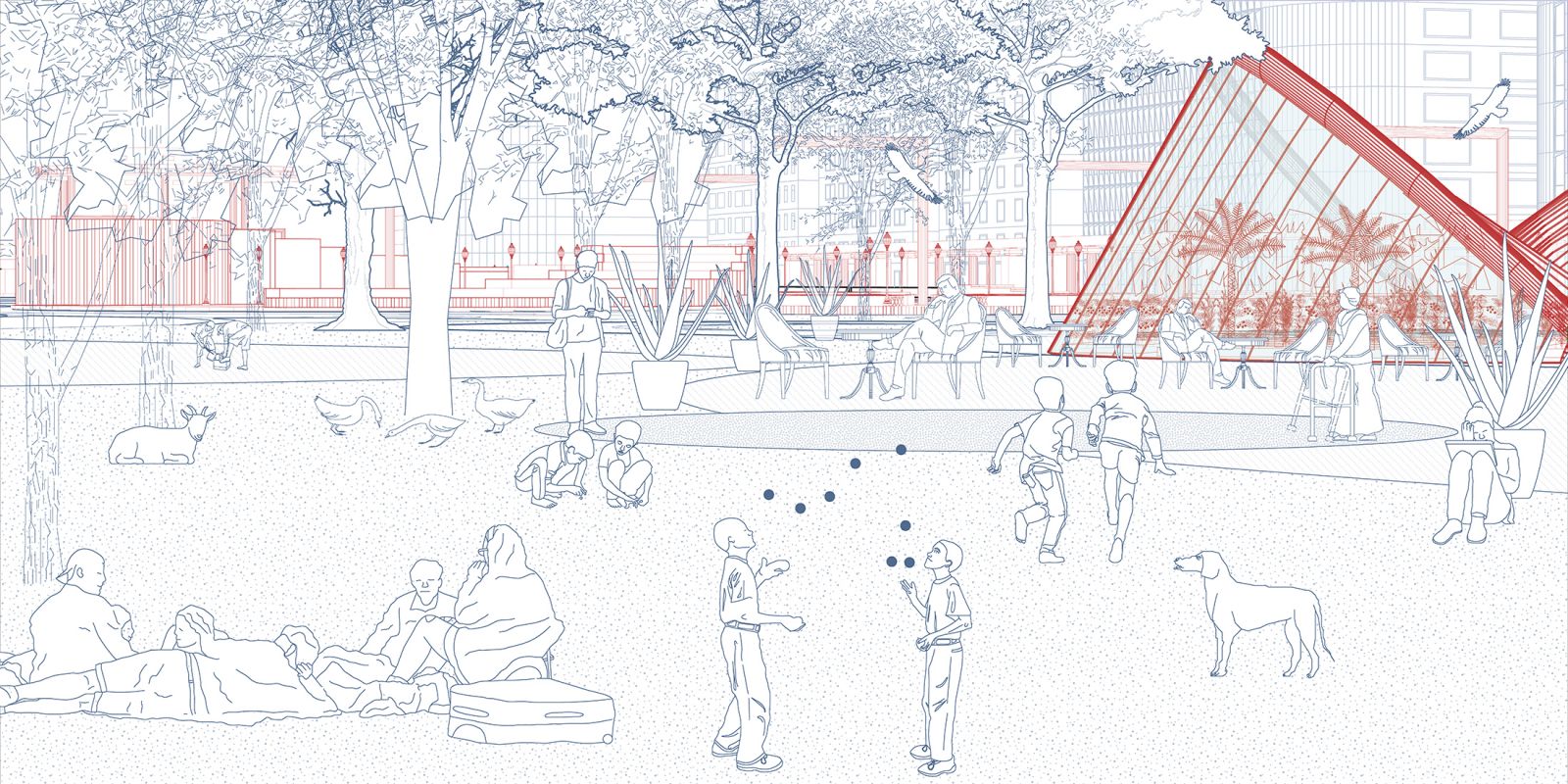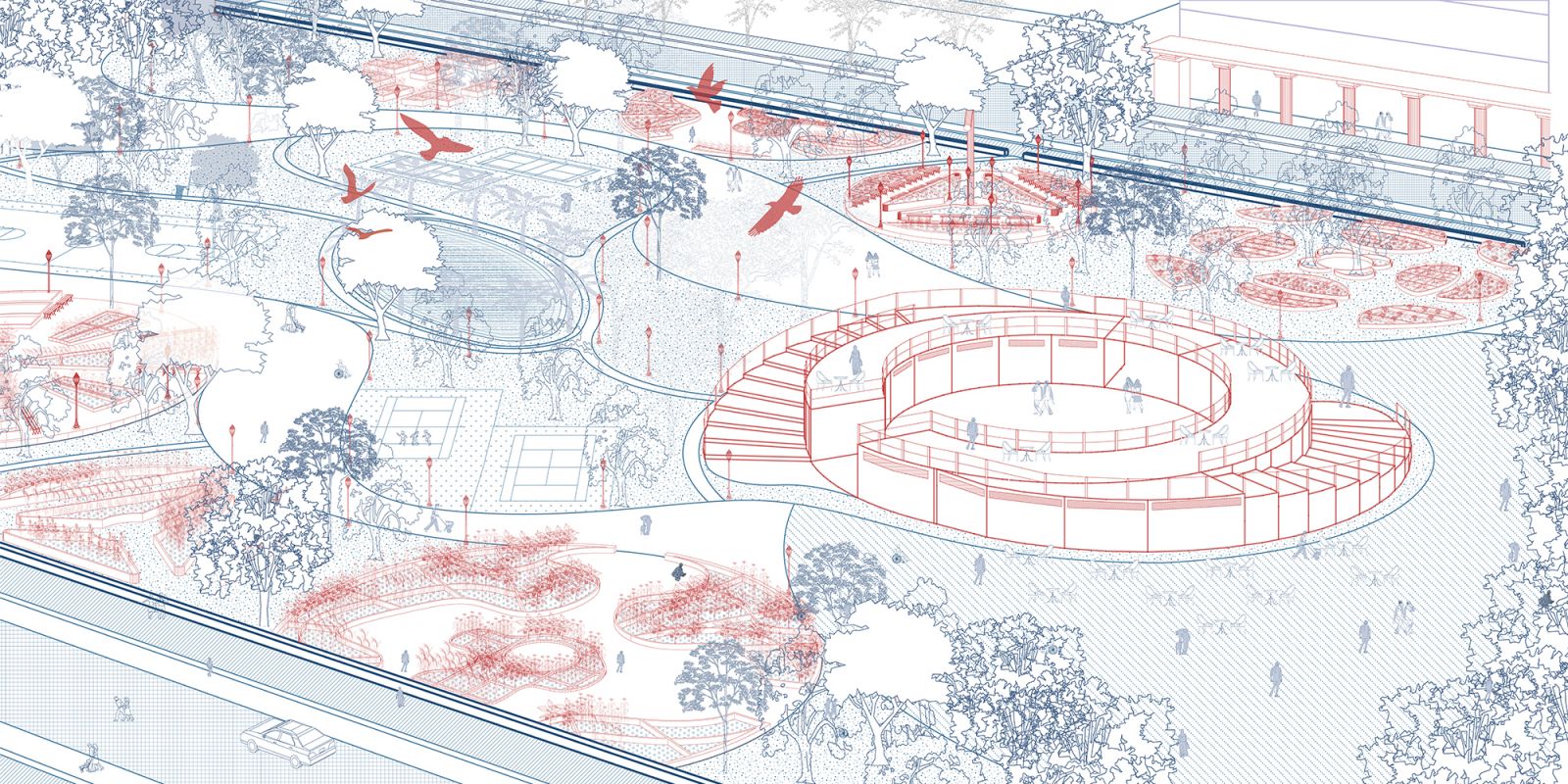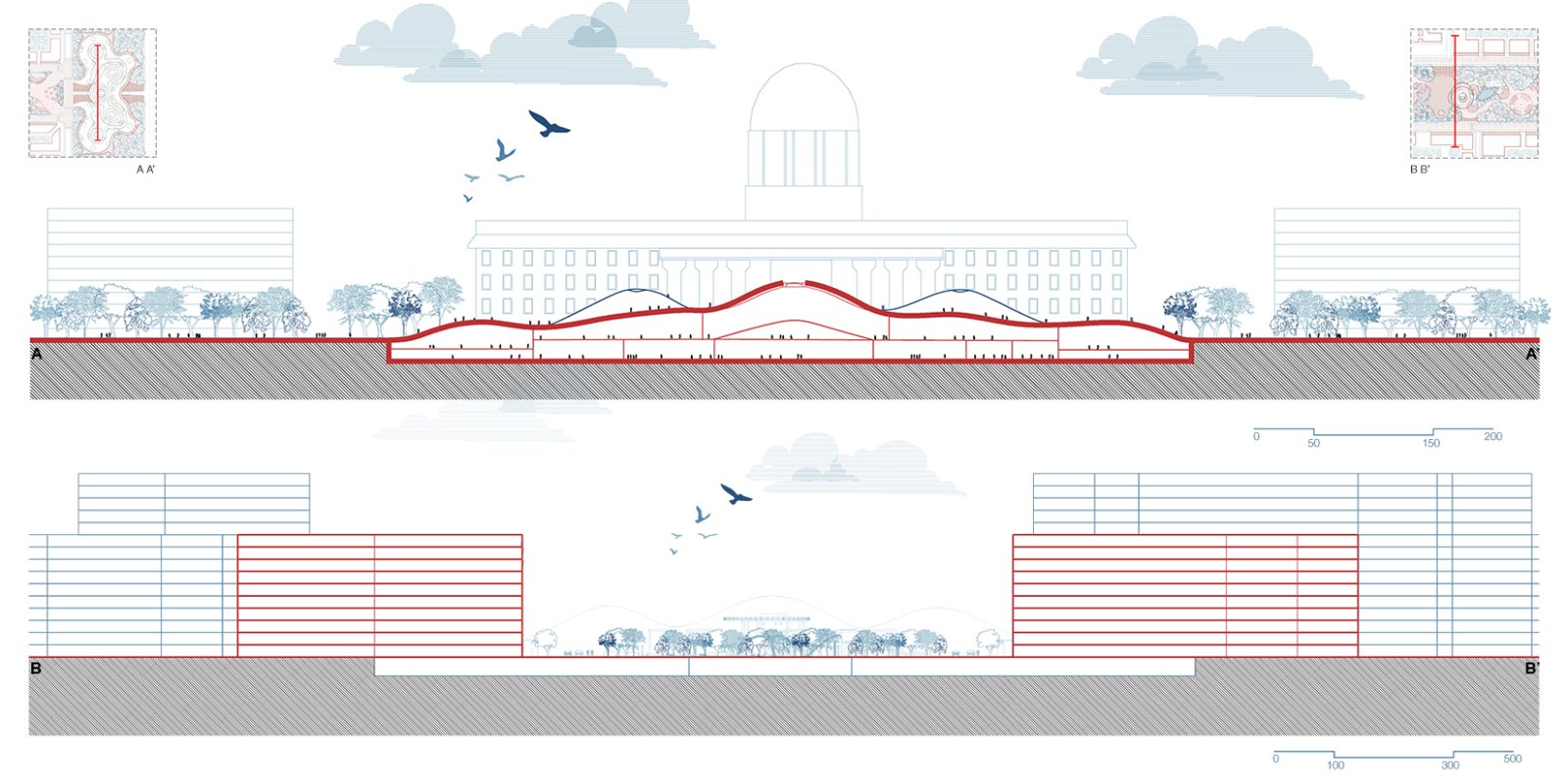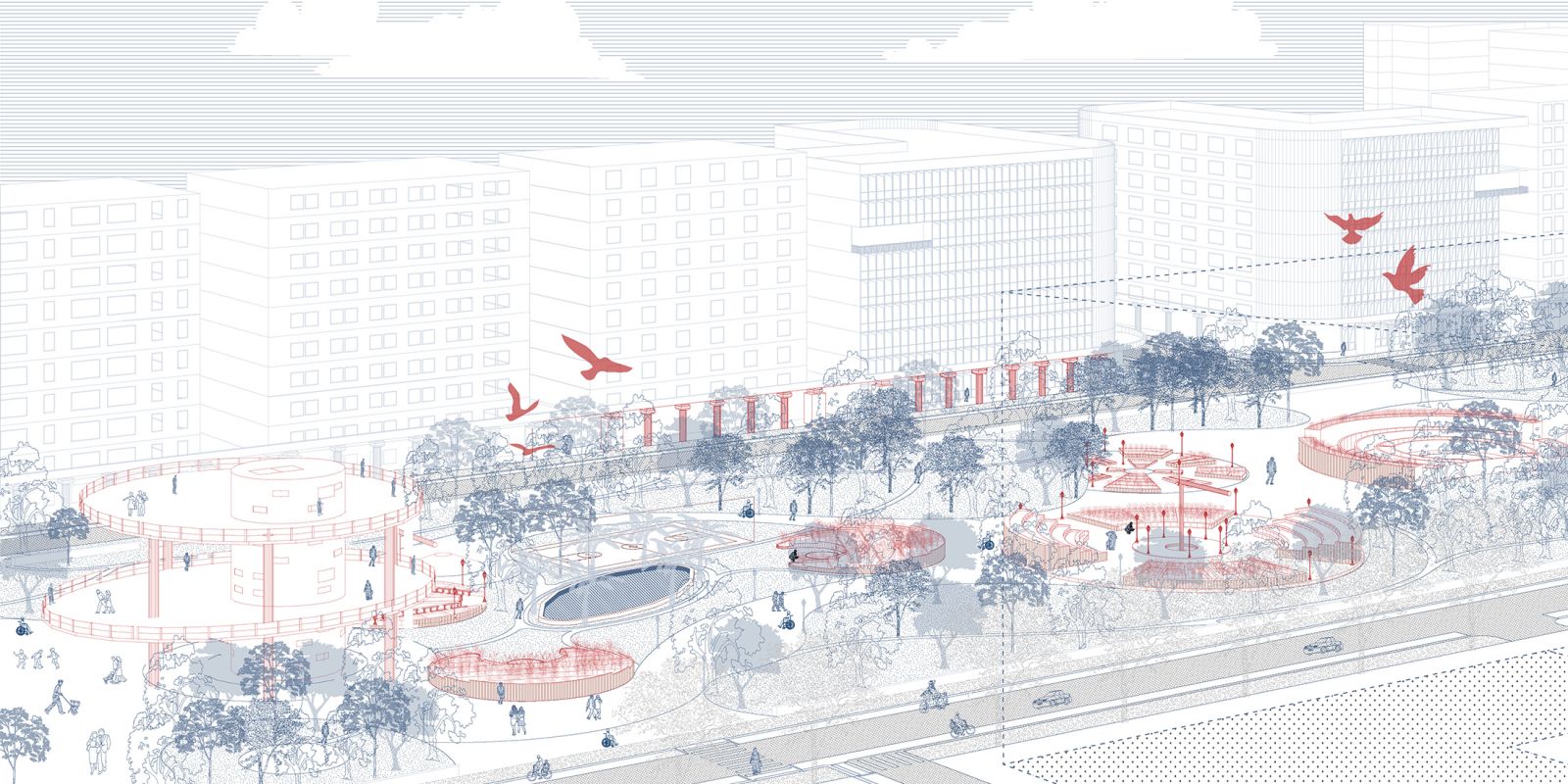Your browser is out-of-date!
For a richer surfing experience on our website, please update your browser. Update my browser now!
For a richer surfing experience on our website, please update your browser. Update my browser now!
A city can only sustain itself if it can keep food in tandem with its overall growth and development. Gandhinagar being a potential hub in the next 10 years will grow in all dimensions possible, making it a complex issue of sustenance. To match its growing needs within the ecological limits, Foodista central envisions Gandhinagar to grow locally with sustainable goals. It will emerge as a vibrant public space with edible landscapes celebrating food by cultivating, collecting, and consuming within the heart of the city. It will allow people to process food through edible and productive landscapes where people can also dine in-between grow patches. Hence, the project envisions an integration within urban farming and edible landscapes, resulting in an interactive playful, and socially engaging experience with food being at its epi-center.
View Additional Work